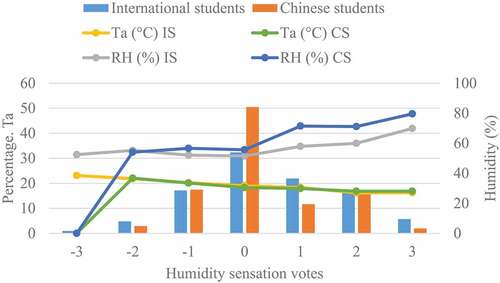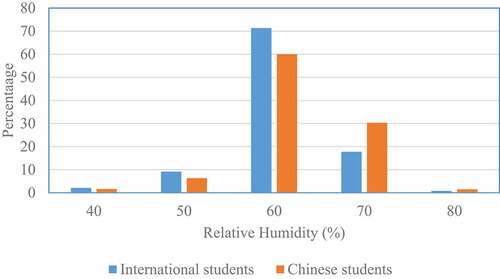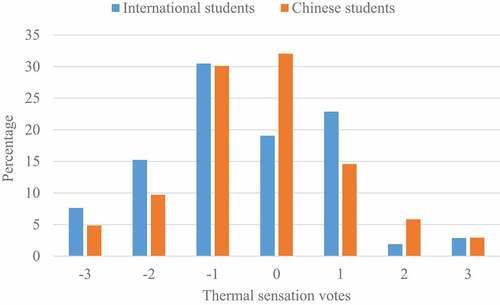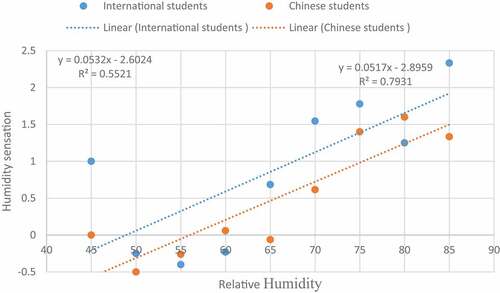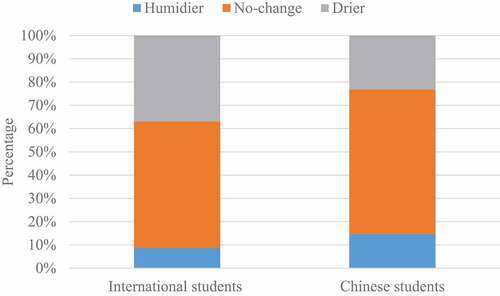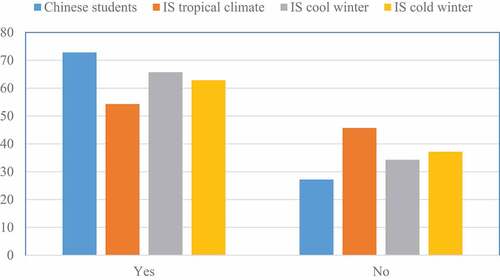Figures & data
Figure 1. Data collection in indoor environments (a) and (b) Some interior space in Chinese and international students’ rooms; (c) Ta and RH recording, (d) AC power and heating-triggered recording

Table 1. Environmental parameters and instruments
Table 2. Demographic information of the study subjects
Table 3. Indoor environmental parameters in the students’ rooms
Table 4. Clothing insulation and metabolic rate of the subjects
Figure 4. Thermal sensation vote for Chinese students and the three categories of international students
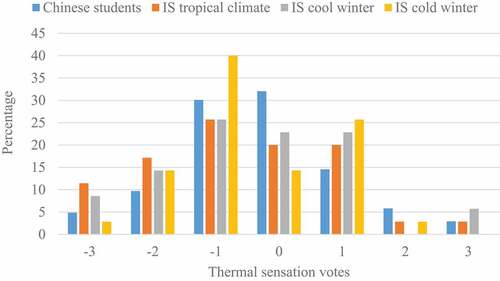
Figure 5. Mean thermal sensation votes and indoor air temperature for international and Chinese students
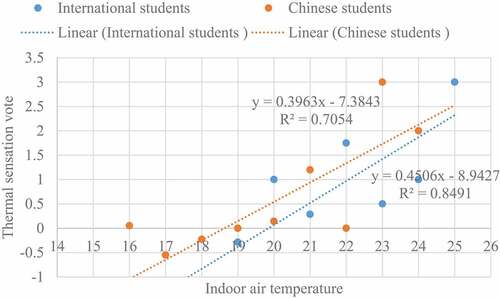
Figure 7. Frequency of occupants’ thermal preference for Chinese students and the three categories of international students

Figure 9. Humidity sensation votes distribution and its corresponding relative humidity and indoor air temperature for international and Chinese students
